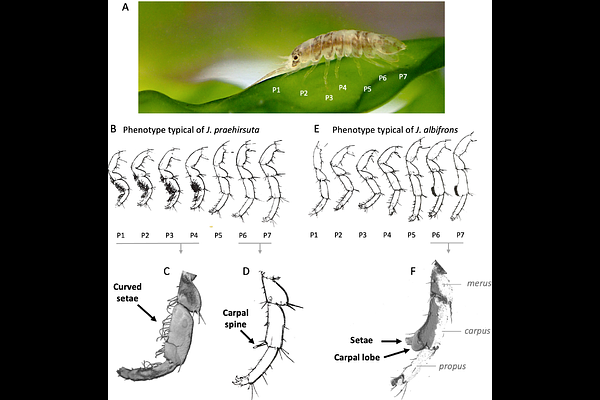Sex chromosomes and chromosomal rearrangements are key to behavioural sexual isolation in Jaera albifrons marine isopods

Sex chromosomes and chromosomal rearrangements are key to behavioural sexual isolation in Jaera albifrons marine isopods
Ribardiere, A.; Daguin-Thiebaut, C.; Coudret, J.; Le Corguille, G.; Avia, K.; Houbin, C.; Loisel, S.; Gagnaire, P.-A.; Broquet, T.
AbstractThe lack of sexual attraction between individuals from different populations is a direct barrier to gene flow between these populations. Here we focus on the evolution of this class of isolating mechanism, behavioural sexual isolation, through the empirical study of two closely related species of small marine isopods. The males of Jaera albifrons and J. praehirsuta similarly engage females in tactile courtship by brushing a specific region of the female\'s back, but they do so with divergent sets of specialised setae and spines, and female choice results in strong reproductive isolation. Using bi-allelic SNP genotypes obtained from double-digest RAD sequencing of individuals from natural populations and controlled crosses, we found that secondary contacts between J. albifrons and J. praehirsuta resulted in different levels of heterospecific gene flow depending on the ecological context. Comparison of the genomic landscapes of differentiation in the two most contrasting situations (extremely low heterospecific gene flow in one region of western France, but strong introgressive hybridisation in another), combined with linkage map analyses, allowed us to conclude that genomic regions impervious to interspecies gene flow are located either on the sex chromosomes or on rearranged chromosomes (several fusion-scissions and one reciprocal translocation). These genomic regions show low recombination, and in two cases QTL analyses found genetic variation associated with several male courtship traits. These results suggest that a long period of allopatry may have allowed the divergent co-evolution of male traits and female preferences, with genetic bases located at least in part in non-recombining regions on sex chromosomes and rearranged chromosomes.